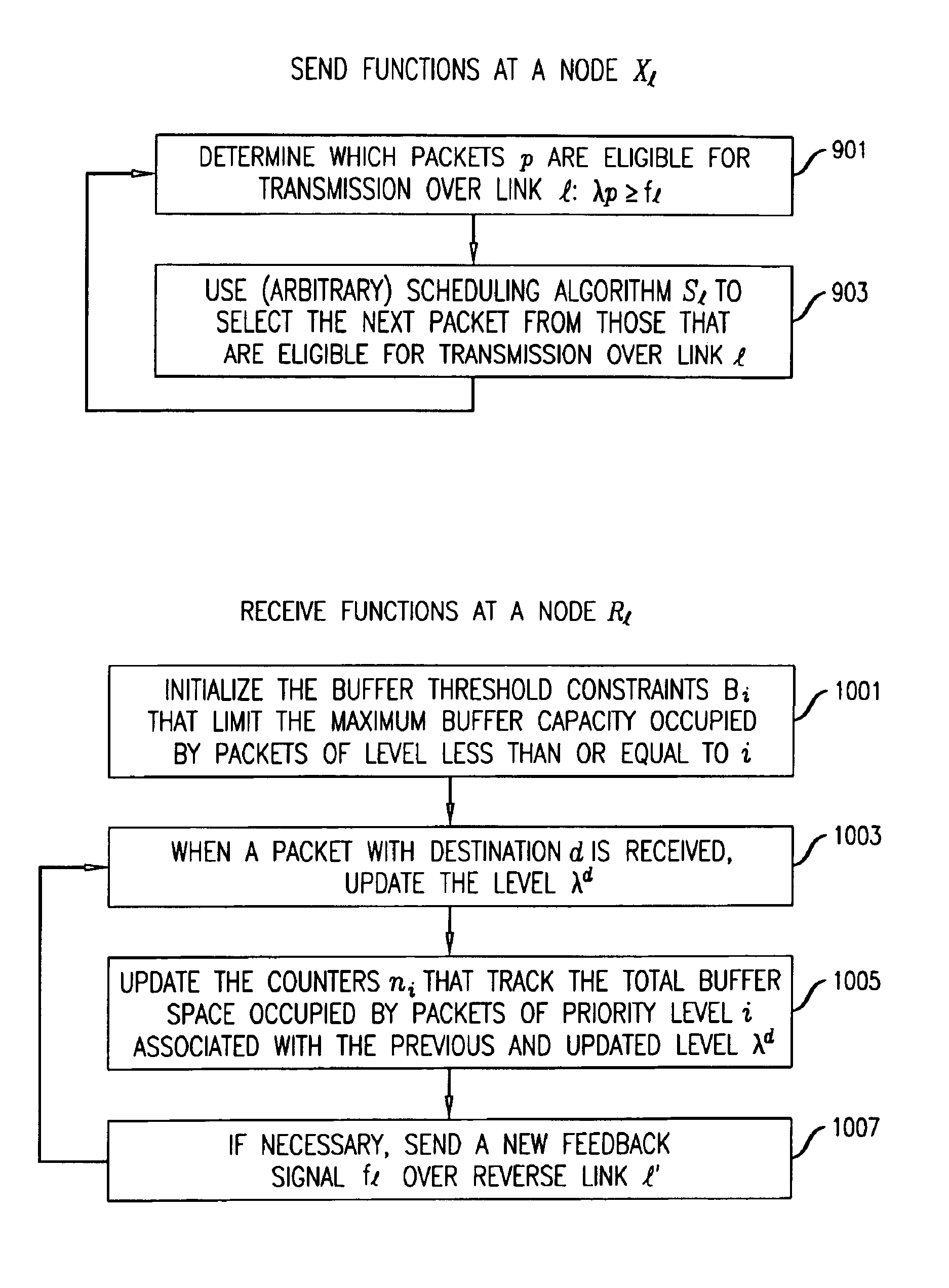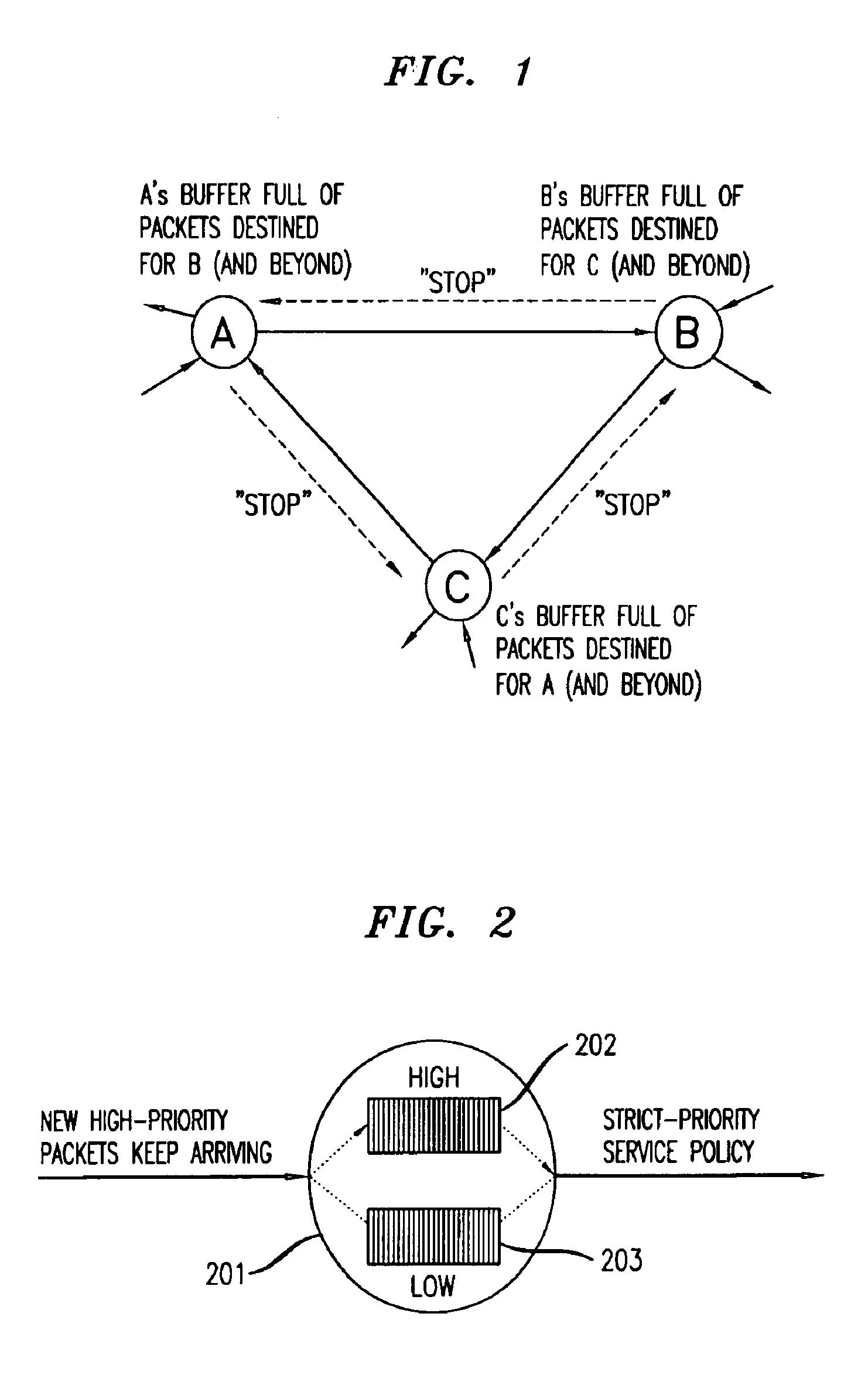Prevention of deadlocks and livelocks in lossless, backpressured packet networks
a packet network and packet technology, applied in the field of packet telecommunications networks, can solve the problems of packets not getting to their destinations, packet information contained in packets transported by the network, and may not meet the requirements of quality-of-service (qos)
- Summary
- Abstract
- Description
- Claims
- Application Information
AI Technical Summary
Benefits of technology
Problems solved by technology
Method used
Image
Examples
Embodiment Construction
Referring first to FIG. 3, consider a packet network that includes two nodes 301 and 302 connected by a one-way communication link l. The sending node 301 is designated by Xl, the receiving node 302 is designated by Rl, and the communication link going in the reverse direction, from Rl to Xl, by l′. Let Sl denote the scheduling algorithm of link l, i.e. the algorithm employed at node Xl to select the next packet from those buffered at Xl for transmission over l. As in prior art arrangements, the scheduling algorithm Sl could possibly base its selection on a number of factors, including packets' order of arrival, service priorities, service deadlines, and fairness considerations. The present invention enhances any prior art scheduling algorithm Sl and avoids packet losses in the network by employing a selective backpressure congestion control mechanism for each link l, to control the eligibility of packets to be transmitted over link l. In this arrangement, before the buffer at the r...
PUM
 Login to View More
Login to View More Abstract
Description
Claims
Application Information
 Login to View More
Login to View More - R&D
- Intellectual Property
- Life Sciences
- Materials
- Tech Scout
- Unparalleled Data Quality
- Higher Quality Content
- 60% Fewer Hallucinations
Browse by: Latest US Patents, China's latest patents, Technical Efficacy Thesaurus, Application Domain, Technology Topic, Popular Technical Reports.
© 2025 PatSnap. All rights reserved.Legal|Privacy policy|Modern Slavery Act Transparency Statement|Sitemap|About US| Contact US: help@patsnap.com



